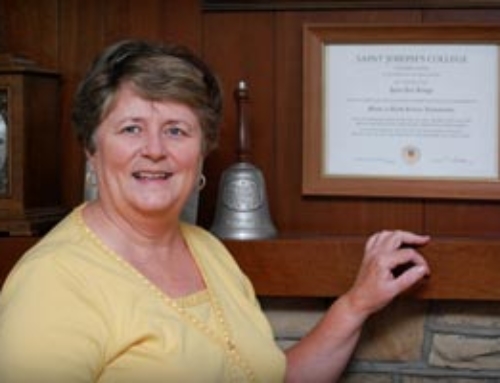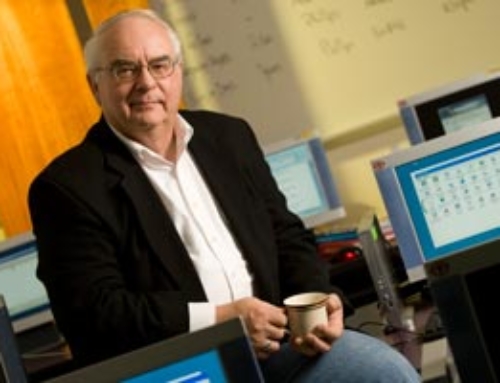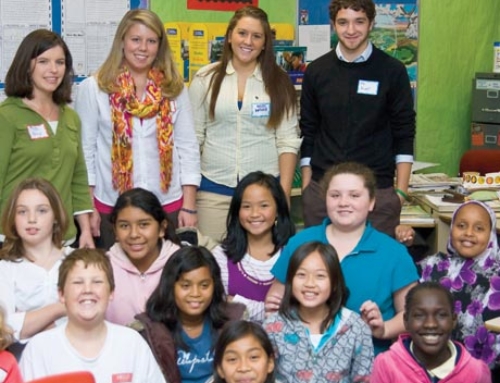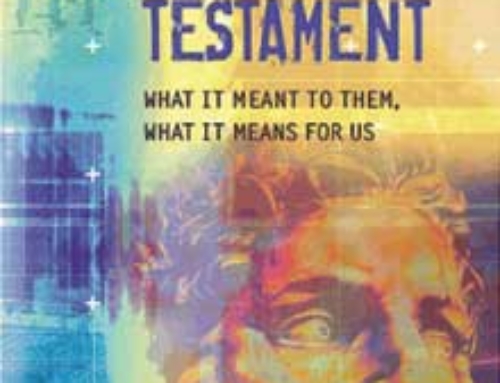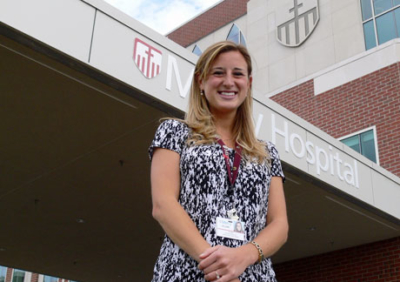 Thanks to students majoring in human resource management, a local law firm now uses Facebook, an insurance company has the ability to "tweet," and a nearby hospital knows what it will take to retain its new crop of Generation Y and Z employees.
Thanks to students majoring in human resource management, a local law firm now uses Facebook, an insurance company has the ability to "tweet," and a nearby hospital knows what it will take to retain its new crop of Generation Y and Z employees.
The major is a mere two years old, but under the tutelage of business professor Beth Richardson, its students have already proved their value to local companies. When a human resources office lacks the time or staff to research pressing issues, they turn to Richardson's students to find answers.
As a former human resources (HR) executive herself, Richardson has forged a rich network of corporate contacts. Thanks to those connections, Richardson was able to build a unique program that benefits businesses and students alike. Even as it provides needed research for companies, it prepares students professionally - sometimes leading directly to jobs. So far, her students have helped eight area companies research a range of issues, including recruitment strategies, the Employee Free Choice Act, executive compensation and new employee orientation.
Jillian Leger '08, a past student of Richardson's who now works in HR at Mercy Hospital in Portland, Maine, sums the program up best. "Those classes weren't the type of classes where you could get an A or a B on a test," she says. "You either did a good job with your projects at the company or you didn't. There's no fooling around. That was my first taste of the corporate world."
Fairchild Semiconductor, headquartered in South Portland, Maine, often hires highly trained engineers from Asia, and Saint Joseph's students helped the company navigate the world of immigration and visas. Brad Bingham '08 researched Fairchild's H-1B visa issues.
"There is currently a cap on the number of immigrants allowed to come work in the United States," says Bingham, who in working with the immigration system learned about ways to facilitate the hiring of highly skilled foreign employees who didn't need visas.
Bingham was hired by Fairchild after graduation in the training and development section.
"Brad brought a lot to the table with his visa research," says Pat Johnson, Fairchild's HR director. "We invited our whole HR community to attend his presentation; he uncovered things we were not aware of."
At Mercy Hospital, a student team is developing standards for hospital-college partnerships. Last year, a different student team completed a large project on introducing younger generations to health care careers.
"Young people bring in a different perspective and have done some very useful things for us," says Peter Russell, Mercy's HR director. "We want to develop a more in-depth partnership with Saint Joseph's."
group of Richardson's students developed an internal social-networking project for UNUM, a Fortune 500 insurance company that wanted to connect people who work in different departments but have similar interests. "People of like-ethnicity and age groups can connect," Richardson says. "The goal is to keep turnover low and to keep baby boomers engaged and not necessarily thinking about retirement."
Kim Wallace '08 helped to implement those social networking applications at UNUM, when she got a job there after graduation. The company, headquartered in Chattanooga, Tenn., has more than 3,000 employees in Maine. One of the applications she helped to launch, "Third Thursdays," brings newly hired college graduates together at the company for lunch where they learn more about each other and the organization.
"Different forms of social networking build employee engagement," says Marie Clements, assistant vice president of human resource strategies at UNUM, who notes there are four generations in today's workplace for the first time in history. "Employee engagement is a very contemporary issue for companies; it's certainly high on our radar screen. The work the Saint Joseph's students helped us discover specifically was what Gen Y really looks for in an employer. We want to be able to communicate to all our employees - and prospective employees - in a way
that works effectively for them."
Wallace has taken up "new media" projects for the company - using Twitter and Facebook as recruitment tools. Called "unumrecruit," Wallace says the company's Twitter account is helpful for visiting college campuses during UNUM's annual fall recruitment drive. "Twitter users can easily find out where we might be," says Wallace, 23. "It actually started as my personal account, but we ultimately decided to make it more company-focused."
Having new energy and ideas like Wallace's is insightful for managers like Clements, a 30-year HR veteran at UNUM. "Using sites like Monster and Career Builder for recruitment is how you reach out now," Clements says. "Ten years ago we would have used the newspaper. It's a very different world in terms of where you're placing your message so that it's seen by those you want."
Students say they are excited to be immersed in corporate culture, a fast-paced world of professional multitaskers. The preparation for debuting professionally starts in the classroom, where Richardson coaches students to avoid using slang such as the often-overused "like" or "my bad" during presentations.
But Richardson notes the maturity displayed when students first meet their perspective host companies at the beginning of the semester.
"I'm pleasantly surprised with how seriously the students take these projects," Richardson says. "It's not just another research paper for them. The fact that they are doing real work is not lost on them. They take it seriously; they rise to the occasion."
Andrew Paladino '09 had to rise to the task one day during his student work with the environmental engineering firm of Woodard & Curran in nearby Portland. He found himself giving two presentations in one day. One report deciphered the payback benefits of a wellness program for the company, while the other was how best to deliver HR services to its 50-odd satellite offices. The company kept him on after he graduated.
"Once they realized what I could do, they've been putting more and more on me," Paladino says.
All signs point to HR as a corporate priority in the future - as health care issues change rapidly, recruitment becomes evermore technological, legal matters grow more complex in the post-Enron era and the baby boomer exodus accelerates. "With baby boomers hitting retirement age, the possibility of losing a lot of talent very quickly is real for many companies," says Richardson.
"It's special to have students who are interested in human resources," says Rowena Holden, recruitment manager at Woodard & Curran. "St. Joe's appealed to us largely because Beth (Richardson) is such an incredible mentor to her students. She brings the world of HR alive. She isn't afraid to push her students. The quality of those students is fantastic; they do a great job."
Richardson says introducing students to a workplace is the most powerful lesson she can teach. "It readies them for a career, jumpstarts their maturity and forms a connection between the classroom and the rest of their professional lives," she says. "For the college, it showcases the quality of our students and the practicality of the education they receive here."
